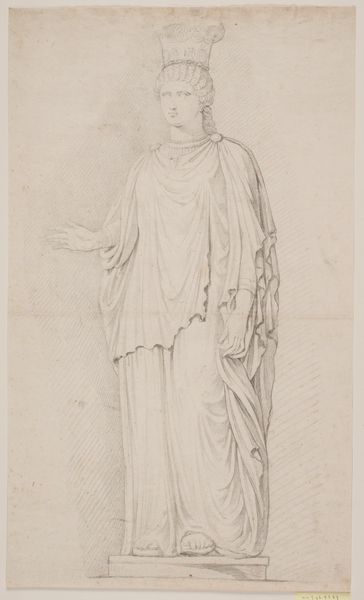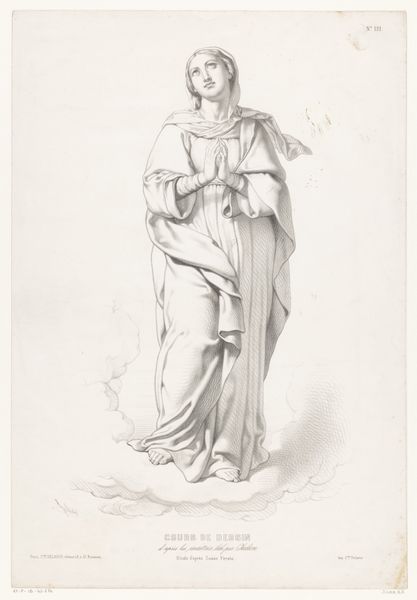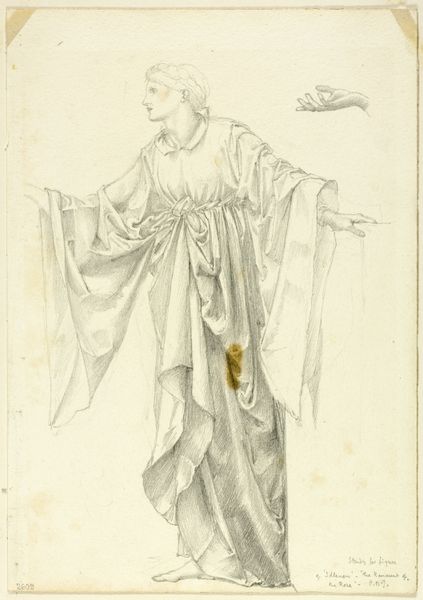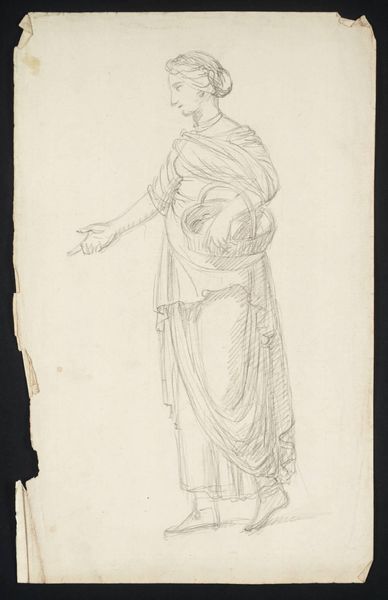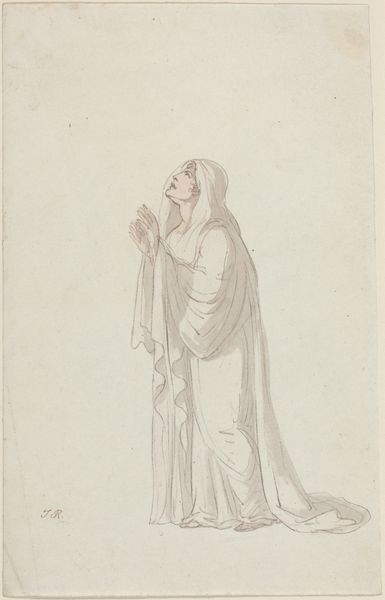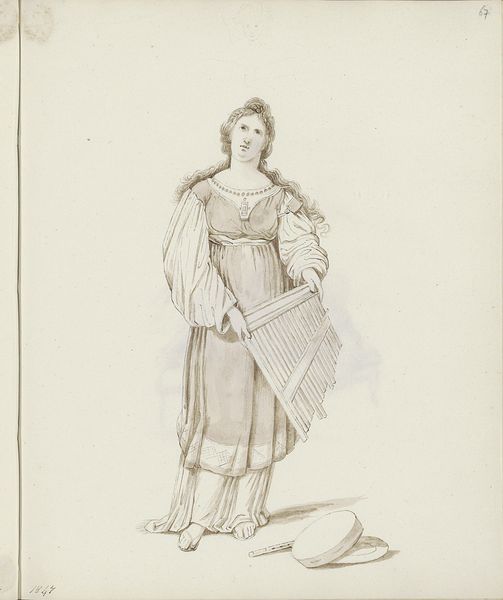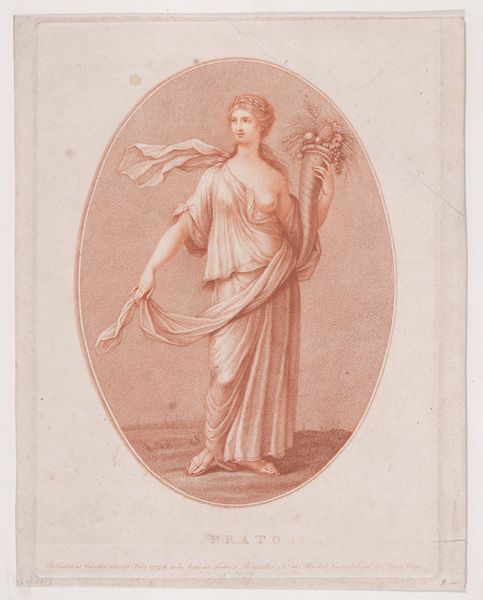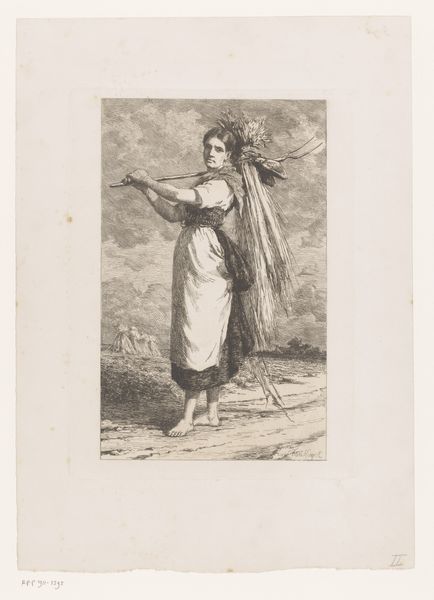
The soprano Karoline Hetzenecker in the role of Sesto in La Clemenza di Tito by W.A. Mozart 1848
0:00
0:00
drawing, print, watercolor
#
portrait
#
drawing
# print
#
watercolor
#
pencil drawing
#
romanticism
#
portrait drawing
#
watercolor
Dimensions: sheet: 14 5/8 x 10 1/4 in. (37.2 x 26.1 cm)
Copyright: Public Domain
Curator: It evokes a sense of serene resignation. Is she surrendering or lost in thought? Editor: Indeed. What we're looking at is Moritz von Schwind's 1848 drawing, "The soprano Karoline Hetzenecker in the role of Sesto in La Clemenza di Tito by W.A. Mozart," now residing at the Metropolitan Museum of Art. The media is a delicate mix of watercolor, pencil, and what appears to be some sort of print. Notice the chains that adorn her wrists and bind her ankles. How do you perceive that given its clear artifice? Curator: Given the theatrical context, I’m curious about the staging and the materials used. Those chains, for example – they’re visually prominent, but surely lightweight for a stage production. Is it a literal representation or a symbolic one that references constraint through material suggestion? Editor: The artist is not offering an observation, but an experience—like a visual aria on themes of freedom and fate, bound by costume and staging conventions. Curator: I’m very much drawn to that point about staging conventions. The very visible brushstrokes tell me about the studio more than the stagecraft. How does the watercolor dialogue with those imposed classical themes of restraint? What were audiences expected to appreciate in this piece? The costuming is obviously historical—so does that give an immediate layer of understanding? Editor: Perhaps. But it seems equally intent to me on capturing Hetzenecker's spirit and presence rather than accurately portraying the stage spectacle, a meeting of Romantic interiority and classical forms. Curator: The drawing embodies the 1848 period that brought about industrial progress in Europe and revolution on the streets of many of its major capitals, a world that was in its way trying to throw off the chains of the past—which is now an object of desire that is celebrated on stage. Fascinating… Editor: In the end, its power comes from revealing how deeply we still feel such timeless burdens of art, labor, and performance, no matter the era.
Comments
No comments
Be the first to comment and join the conversation on the ultimate creative platform.
